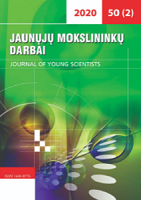ISLAMO IR MUSULMONŲ REPREZENTACIJA KINEMATOGRAFIJOJE: FILMŲ „BĖGANTIS PASKUI AITVARĄ“ IR „NUOLANKUMAS“ ANALIZĖ
REPRESENTATION OF ISLAM AND MUSLIMS IN CINEMATOGRAPHY: CASE STUDIES OF THE KITE RUNNER AND SUBMISSION
Author(s): Rūta SutkutėSubject(s): Media studies, Islam studies, Cultural Anthropology / Ethnology, Film / Cinema / Cinematography
Published by: Vilniaus Universiteto Leidykla
Keywords: Orientalism; stereotypes; Submission; The Kite Runner; representation; Islam; Muslims; Islam-related films; E. Said; media; Netherlands; discourse analysis;
Summary/Abstract: This article provides a textual and visual analysis of Hirsi Ali and van Gogh’s controversial short film Submission (2004) and Marc Forster’s The Kite Runner (2007). Emphasis is placed on rhetorical and plot strategies aimed at reinforcing unproductive Orientalist stereotypes of Islam and Muslims. The goal of this analysis is to find out how Muslims and Islam are presented in Submission and The Kite Runner, based on E. Said’s work Orientalism (1978) and to identify the role of cinematography in creating stereotypes in different cultural environments. Theo van Gogh’s assassination influenced public attitudes towards Muslims. The following tasks were set: to analyze the concept of Orientalism and stereotypes, connections with the media and the influence of popular culture on their expression; to find out the role of the Muslim minority in the process of constructing social reality (stereotypes); to analyze how Muslims and Islam are presented in the films Submission and The Kite Runner. Summarizing the analysis of the film Submission, it should be noted that the main character is supposedly portrayed as being oppressed by Islamic culture, who lived in complete isolation, thus reinforcing negative attitudes and stereotypes in society towards Muslims, especially women. However, the subject of Submission, feminism or the oppression of women, was never the main subject of discussion, on the contrary, it was Islamic radicalism, extremism and terrorism. Meanwhile, after analyzing the film The Kite Runner, it should be noted that the plot reveals stereotypes about Islam and Muslims that exist in both Western and Eastern societies. Oriental characters are portrayed in the film as much lower in morality and values than, for example, Westerners. The film’s episodes emphasize fanatical consequences of both terrorism and Islamism, and the relationship between the main characters reflects the orientalist culture of Afghanistan.
Journal: Jaunųjų mokslininkų darbai
- Issue Year: 2020
- Issue No: 2 (50)
- Page Range: 32-44
- Page Count: 13
- Language: Lithuanian

